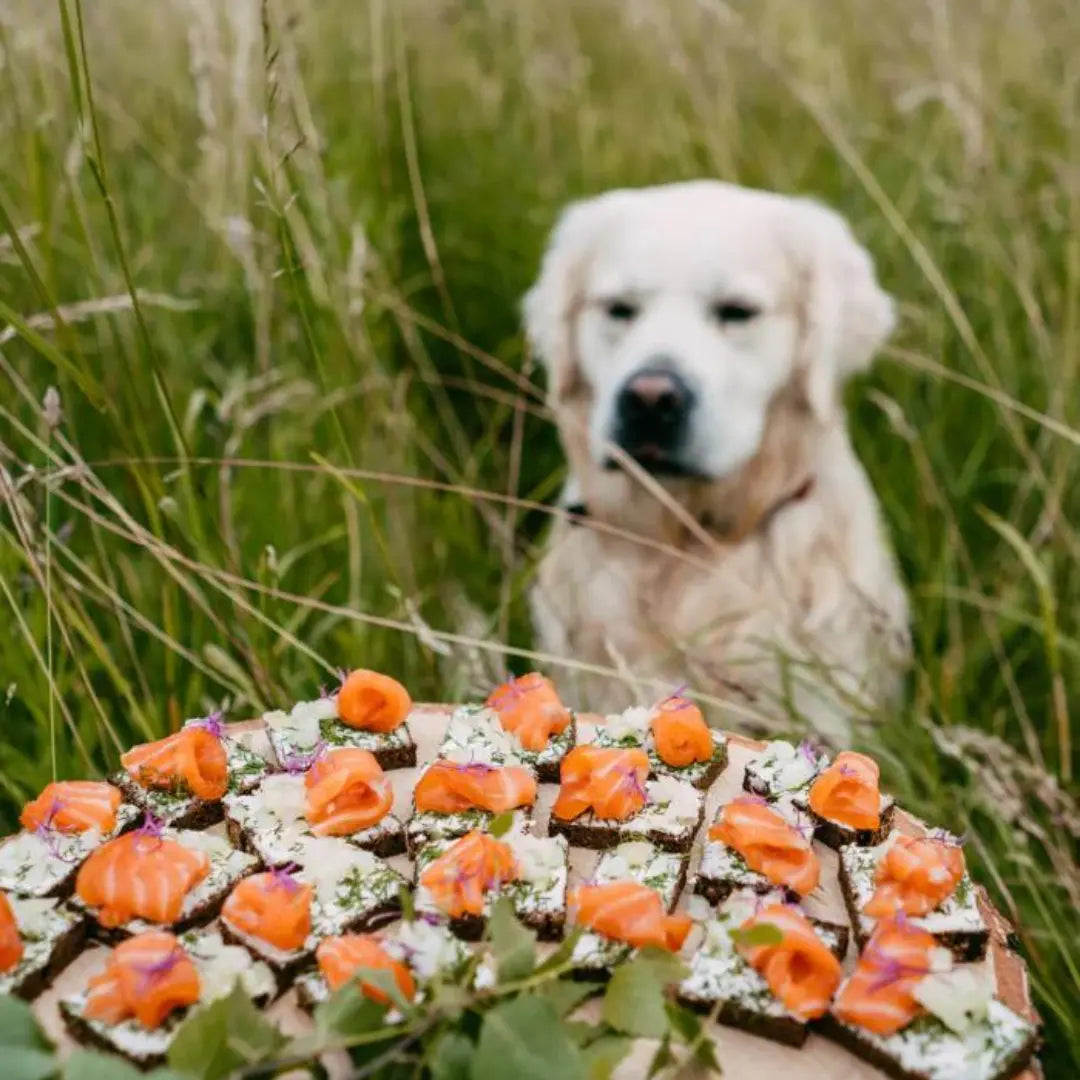Let's talk about upcycling! Upcycling for your pet can be one of the most sustainable and cost-effective forms of home cooking for your dog. However, in order to truly understand the benefits of upcycling, it's essential to look back on why it's important, the effects of food waste and where it comes from. Food waste is one of the world's most urgent environmental and agricultural issues. Food waste is the largest contributor to world hunger and a significant source of greenhouse gasses (Pet Parenting, 2021). Much of the food waste we see comes from grocery stores throwing away produce that may not seem very appealing to a customer on a shelf. As a result, the bruised, misshapen and unappealing produce is put back into the earth, which can be a waste of resources. Therefore, upcycling refers to something that generally would've been thrown away being reused in a different way that increases its value.
Historically, cooked foods were never part of a dog's diet; instead, they lived off of prey and any scraps they could get. Cooked foods were only introduced over the last 80 years. Before the industrialization of food, people used to feed their dogs leftovers and table scraps which were often real, fresh and unprocessed foods. While some people still do this, many people are caught up in the simplicity and advertising of pre-packaged dog food and kibble. In fact, many people are unaware of the adverse effects of these foods and often believe kibble, and packaged food is the healthy and right choice for their dog. This is why it's essential to highlight and emphasize the benefits of upcycling and choosing real ingredients for your pet. Upcycling can be beneficial for both you and your pet, and as I said before, dogs have been eating the scraps that humans don't want for years!
Canada has one of the highest rates of food waste in the world, making this issue all the more important to address and solve. As humans, we often tend to be picky-eaters in terms of wanting the most perfectly ripe, pretty and appealing products, which leaves a ton of food to go to waste. Therefore, upcycled ingredients are often high-quality human-grade ingredients that just don't fit the traditional look or appeal to be sold. However, giving these otherwise "ugly" products to our pets can be the best solution as it can be assured they don't care what they look like! Feeding our pets the food and products that will otherwise go to waste is a cost-effective and sustainable way to help the planet and make for one happy pup! Upcycled foods provide a growth opportunity to repurpose those unwanted ingredients that would have never made it to human consumption. As mentioned before, dogs used to survive off of table scraps, so upcycling is nothing new for them, and it's a much better alternative to the highly processed and toxic ingredients that can be found inside that convenient bag of kibble many reach for.
There are many ways you can upcycle at home for your pet, and some may be more obvious than others. An example of upcycling at home is using items such as Fish Skins or Bones that are often thrown away to make a nutrient rich fish or bone broth . Other examples include using old dog-friendly fruits or vegetables such as brown bananas or mushy pears and making homemade dog food recipes out of them to feed your pet. There are plenty of opportunities when it comes to upcycling at home for your pet, and we encourage you to start making use of those old dog-friendly ingredients in your fridge next time dinner rolls around!
Pet Parenting. (2021). Upcycled Ingredients in the Pet Food Industry. Washpaw.



